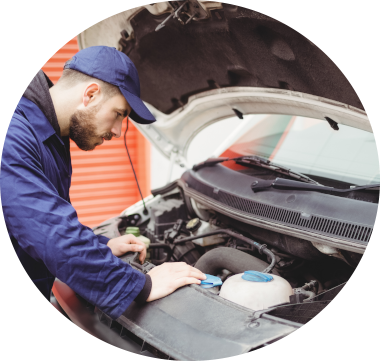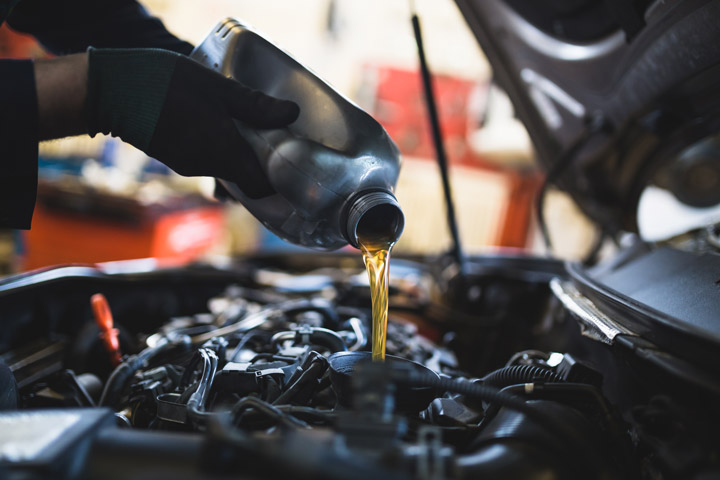All Categories
Featured

[/image]
2 of the most crucial tire services are tire turning and alignment. If you're unknown with what tire turning and positioning involve, below's an in-depth appearance at why they matter and just how they benefit your lorry.
What Is Tire Turning? Tire rotation refers to moving your tires from one position to one more to guarantee they put on uniformly. The reason tire rotation is necessary is because not all tires put on similarly. In front-wheel-drive cars, for instance, the front tires take care of both guiding and power, that makes them wear faster than the rear tires. The rear tires wear differently in rear-wheel-drive and all-wheel-drive vehicles.
By revolving your tires on a regular basis, you can stabilize out the wear across all four tires. This aids them last much longer and enables more even traction, boosting handling and stability. Many manufacturers recommend revolving your tires every 6,000 to 8,000 miles or based on the vehicle's handbook.
What Is Tire Alignment? Tire alignment, additionally understood as wheel placement, describes the process of readjusting the angles of your auto's wheels to fulfill the manufacturer's specifications. The goal of positioning is to guarantee that all four tires are directing in the best direction and at the proper angles, which enables for optimum handling, safety, and tire life.
There are three main alignment angles that are changed during a placement check:

Camber: The tilt of the wheels when viewed from the front. If the camber is off, it can lead to uneven tire wear, as the tire will not make full call with the roadway surface. Wheel: The angle of the guiding axis when seen from the side. Correct wheel positioning ensures that your car is stable when driving straight which your wheel returns to its typical position after a turn. Toe: The angle at which the tires point internal or outside when watched from above. Incorrect toe positioning can create the tires to drag, bring about uneven wear and decreased gas efficiency. Imbalance can occur in time as a result of regular driving or from hitting obstacles like curbs or gaps. If your alignment is off, it is necessary to get it checked and remedied to prevent issues in the future.
Why Tire Turning and Alignment Issue. Increased Tire Life:. Normal tire rotation guarantees even tire wear, assisting you get the most gas mileage out of your tires. Uneven wear can cause you to replace tires prematurely, which can be pricey. When your tires use equally, they last much longer, saving you money in the long-term.
Improved Automobile Handling:. Proper alignment keeps your car driving straight and steady, particularly at higher speeds. Misalignment can cause your car to draw to one side, making it more difficult to guide. By maintaining your tires lined up, you ensure your lorry manages much more smoothly and predictably.
Boosted Safety And Security:. Tires that are not revolved or lined up properly can wear unevenly, affecting just how well your car quits and corners. Misaligned tires or tires with irregular wear patterns might trigger minimized traction, particularly in wet or icy problems, leading to a higher threat of crashes.
Much Better Gas Effectiveness:. Tires that are misaligned can create rolling resistance, implying your engine needs to work more challenging to relocate the vehicle. This boosts fuel consumption and reduces your car's fuel effectiveness. Correct tire alignment reduces rolling resistance, which can improve gas mileage.
Indications Your Tires Need Rotation or Alignment. While it's vital to stay on top of regular tire turnings and placements, there are a few signs that may suggest your tires need interest:
Unequal Put On: If you observe that one tire is more worn than the others, it's most likely time for a turning. Steering Pull: If your vehicle pulls to one side or really feels off-center, it can be a sign of imbalance. Resonances: If you feel resonances in the steering wheel or the auto, it could be because of a placement concern. Noisy Tires: Screeching or loud tires might indicate improper turning or imbalance. If you discover any of these indicators, it is very important to obtain your tires checked by an expert.
How Often Should You Rotate and Align Your Tires? Tire turning should normally be done every 6,000 to 8,000 miles, though this can vary based on your driving conditions and the sort of vehicle you drive. It's additionally an excellent idea to have your tires revolved whenever you get an oil change.
For placement, you need to have your tires lined up every 1-2 years, or extra often if you notice any kind of issues with dealing with or unequal tire wear. If you struck a big hole or aesthetic, it's smart to get a positioning examine today.
Final Thought: Regular Upkeep for Optimum Efficiency. Tire turning and placement are two basic yet important services that maintain your automobile running smoothly, successfully, and safely. By turning your tires on a regular basis and maintaining your wheels effectively lined up, you can expand the life of your tires, improve handling, and take pleasure in much better gas performance.
Latest Posts
Discover Exclusive Auto Repair Offers in Chicago at Montclare Auto Repair
Explore the Top Auto Repair Deals in Montclare, Chicago
Learn Why Chicago Drivers Trust Montclare Auto Repair for Reliable Service and Huge Savings
More
Latest Posts
Discover Exclusive Auto Repair Offers in Chicago at Montclare Auto Repair
Explore the Top Auto Repair Deals in Montclare, Chicago
Learn Why Chicago Drivers Trust Montclare Auto Repair for Reliable Service and Huge Savings